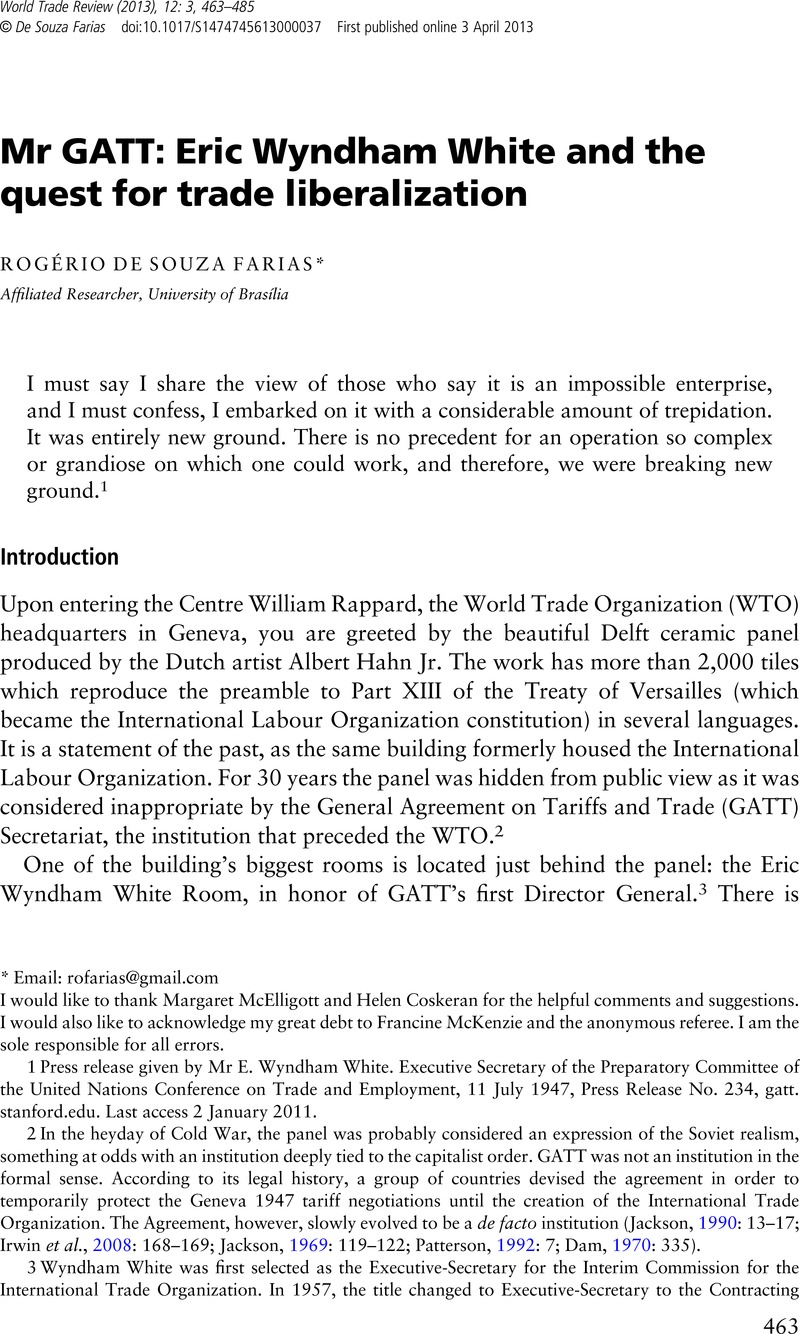Crossref Citations
This article has been cited by the following publications. This list is generated based on data provided by Crossref.
Marceau, Gabrielle
Porges, Amelia
and
Baker, Daniel Ari
2015.
A History of Law and Lawyers in the GATT/WTO.
p.
1.
Schneider, Eric
Morys, Matthias
Lampe, Markus
and
Enflo, Kerstin
2017.
Review of periodical literature on continentalEurope from 1700 published in 2013.
The Economic History Review,
Vol. 70,
Issue. 3,
MARGULIS, MATIAS E.
2017.
The Forgotten History of Food Security in Multilateral Trade Negotiations.
World Trade Review,
Vol. 16,
Issue. 1,
p.
25.
Coppolaro, Lucia
2018.
The Encyclopedia of Diplomacy.
p.
1.
McKenzie, Francine
2020.
GATT and Global Order in the Postwar Era.
Murray, Edmundo
2023.
Art Discovery and Censorship in the Centre William Rappard of Geneva.
p.
85.
Rai, Prahlad
2024.
Non-Governmental Organisations and International Law.
p.
305.



